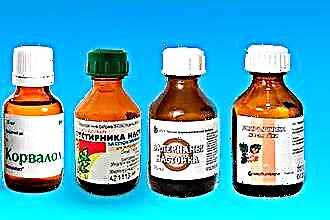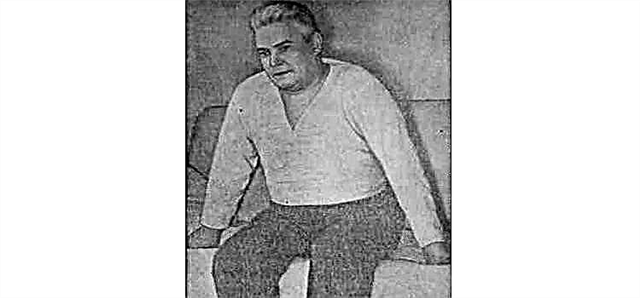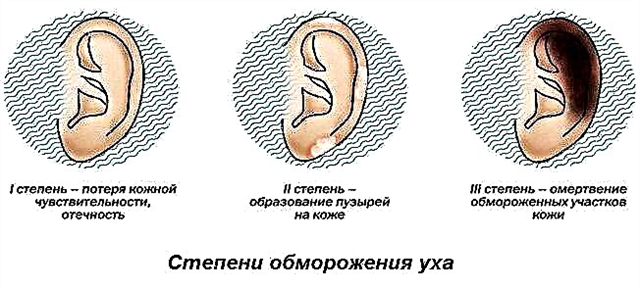Causes
 The problem of a prolonged runny nose in childhood is quite relevant - this phenomenon can occur in a very young child, and in a preschooler, and in a teenager. A long runny nose causes justified concern, since it often indicates the development of complications of the primary pathological process - rhinitis, that is, inflammation of the nasal mucosa. What if the child cannot breathe through his nose? To understand if there is a need for treatment, you need to find out what is the reason for the prolonged persistence of symptoms.
The problem of a prolonged runny nose in childhood is quite relevant - this phenomenon can occur in a very young child, and in a preschooler, and in a teenager. A long runny nose causes justified concern, since it often indicates the development of complications of the primary pathological process - rhinitis, that is, inflammation of the nasal mucosa. What if the child cannot breathe through his nose? To understand if there is a need for treatment, you need to find out what is the reason for the prolonged persistence of symptoms.
Most often, a runny nose in children is accompanied by acute respiratory infections (ARI), which are usually combined with the simplified concept of "cold". ARI can be caused by viruses or bacteria, transmitted by airborne droplets - thus, the nasal mucosa is the "gateway" of the infection, the first to encounter the causative agent of the disease. In most cases, a runny nose is acute, ends with recovery within 7-8, at least 7-10 days.
Allergic rhinitis is also not uncommon in childhood - the duration of the course ranges from several days to several weeks. Among the prerequisites for development are frequent respiratory infections, chronic infectious and inflammatory diseases of the respiratory system. With this pathology, the child is sensitive to a variety of allergens, contact with which maintains the activity of allergic inflammation.
A prolonged runny nose can also be associated with:
- with the development of sinusitis;
- with the development of adenoiditis;
- with unsatisfactory microclimate conditions in the children's room (dry, overheated air, excess dust);
- with improper use of decongestants, or vasoconstrictor drugs for the nose (development of vasomotor rhinitis medicamentosa).
Thus, a prolonged runny nose in a child lasts longer than 10 days, the cause may be infectious, allergic factors, unfavorable microclimate parameters, abuse of vasoconstrictor drops.
A prolonged runny nose may indicate a decrease in immune reactivity, that is, the presence of immunodeficiency, as well as the formation of a chronic infectious and inflammatory focus (chronic rhinitis). It is necessary to start searching for the cause as soon as possible, since at the initial stage of the pathological process, the changes can be completely or partially reversible, and it will be easier to improve the child's condition.
How to proceed
If the child does not have a runny nose, you first need to assess if there are other changes in the condition. So, weakness, swelling of the nasal mucosa, an increase in body temperature, thick, viscous purulent discharge from the nose that appears against the background of rhinitis or almost immediately after recovery are likely signs of sinusitis or adenoiditis. Transparent discharge, pronounced edema in combination with itching of the nose, eyes, sneezing are symptoms of allergies. Dry and hot air leads to congestion, intermittent coughing without the manifestations of a cold or allergy. Medicamentous rhinitis is characterized by severe nasal congestion, dependence on decongestant drops.
Only a pediatrician can establish the correct diagnosis, so you should not postpone your visit to the clinic.  It is necessary to tell the specialist in detail about what symptoms preceded the prolonged rhinitis, whether vasoconstrictor drugs in the form of drops and nasal sprays were used in the treatment of the child - in what dosages, how often, how many days. To clarify the situation in controversial cases, X-ray of the paranasal sinuses, a complete blood count and other studies recommended by the doctor can be used.
It is necessary to tell the specialist in detail about what symptoms preceded the prolonged rhinitis, whether vasoconstrictor drugs in the form of drops and nasal sprays were used in the treatment of the child - in what dosages, how often, how many days. To clarify the situation in controversial cases, X-ray of the paranasal sinuses, a complete blood count and other studies recommended by the doctor can be used.
How to cure a lingering runny nose in a child? The primary activity is to normalize the conditions in the room where the child spends most of the time. Necessary:
- Achieve humidity values in the range of 50–70%, maintain the temperature at 18–20 ° C.
- Eliminate contact with irritants, which include dust, household chemicals, cosmetics, feathers, tobacco smoke.
- Eliminate sudden changes in the temperature of the inhaled air, make sure that the room is regularly ventilated.
- Free the room from things that can accumulate dust - heavy curtains, carpets, soft toys, fluffy bedspreads.
- Monitor the child's diet - exclude allergenic foods (citrus fruits, cow's milk, chocolate, etc.), spicy, crumbling dishes.
To treat a prolonged runny nose, it is necessary to use saline solutions (Aqua Maris, Physiomer) for rinsing the nose, administration in the form of drops - this will help moisturize and cleanse the mucous membrane.
Already these actions can help get rid of obsessive congestion, if it was caused by excessive dry air. Eliminating dust, a common allergen, will also help your baby breathe easier. The listed activities are useful for any type of lingering rhinitis, since they help to reduce the irritating effect on the inflamed mucous membrane - they are mandatory, even if drug therapy is prescribed.
Treatment principles
How to cure a prolonged runny nose in a child with sinusitis or adenoiditis? Sinusitis, inflammation of the paranasal sinuses, and adenoiditis, an inflammatory process in the area of a hypertrophied pharyngeal tonsil, can occur in isolation (any specific disease) or in combination. With improper treatment or its absence, they become chronic, therefore it is very important to recognize and treat protracted rhinitis in time. Recommended:
- rinsing the nose with saline solutions (Physiomer), antiseptics (Furacillin) - including the "displacement" or "cuckoo" method;
- the use of local antiseptics, antibiotics (Bioparox, Polidexa);
- inhalation of mucolytics, that is, mucus thinning agents (Fluimucil, Fluimucil Antibiotic IT);
- introduction of vasoconstrictor nasal drops (Xylometazoline, Phenylephrine) - no longer than 5-7 days.
 With purulent inflammation, antibiotic therapy is necessary (Amoxicillin, Clarithromycin). Also shown are anti-inflammatory drugs (Tantum Verde, Sinupret, Pinosol, Hydrocortisone), physiotherapy (for example, laser therapy). "Cuckoo" is performed by a pediatric ENT doctor in a medical institution.
With purulent inflammation, antibiotic therapy is necessary (Amoxicillin, Clarithromycin). Also shown are anti-inflammatory drugs (Tantum Verde, Sinupret, Pinosol, Hydrocortisone), physiotherapy (for example, laser therapy). "Cuckoo" is performed by a pediatric ENT doctor in a medical institution.
What to do if an allergic lingering rhinitis occurs in a child - how to treat it in order to quickly alleviate the condition? Antihistamines (Desloratadine), topical glucocorticosteroids (Nasonex), decongestants are used. It is important to follow a hypoallergenic diet, rinse and moisturize the nose, if possible, identify allergens and avoid contact with them.Treatment of lingering rhinitis in children with allergies is carried out under the supervision of a pediatrician and pediatric allergist.
To cure a prolonged runny nose in a child with vasomotor medication rhinitis, it is necessary to abandon vasoconstrictor drugs.
The risk of developing medication rhinitis exists after 7 days of regular use of vasoconstrictor drops, and the recommended duration of use in childhood is up to 3 days. Sometimes strictly controlled use is allowed for 5-7 days. A vasomotor rhinitis by itself will not go away if you continue to use drops, and advanced cases require surgery, so treatment should be started as early as possible.
If the child does not have a runny nose for a long time due to improper use of vasoconstrictor drops, the refusal of these drugs should be combined with rinsing the nose, prescribing topical glucocorticosteroids, and physiotherapy. The course of treatment usually lasts several weeks.
Treating a runny nose that lasts longer than 10 days is not always an easy task. The selection of drugs and the necessary procedures is carried out by the doctor, since in each case an individual approach is required, and the drugs allowed for older children cannot always be used in a small child. It is necessary to correctly combine pharmacological agents and non-drug methods in order to achieve the early disappearance of congestion and improve the condition.



